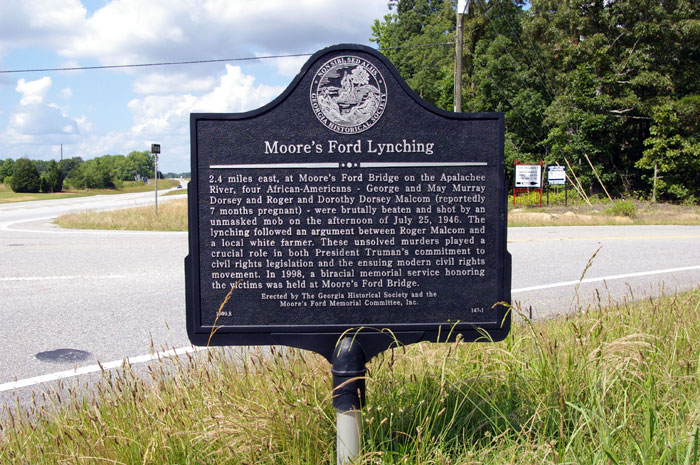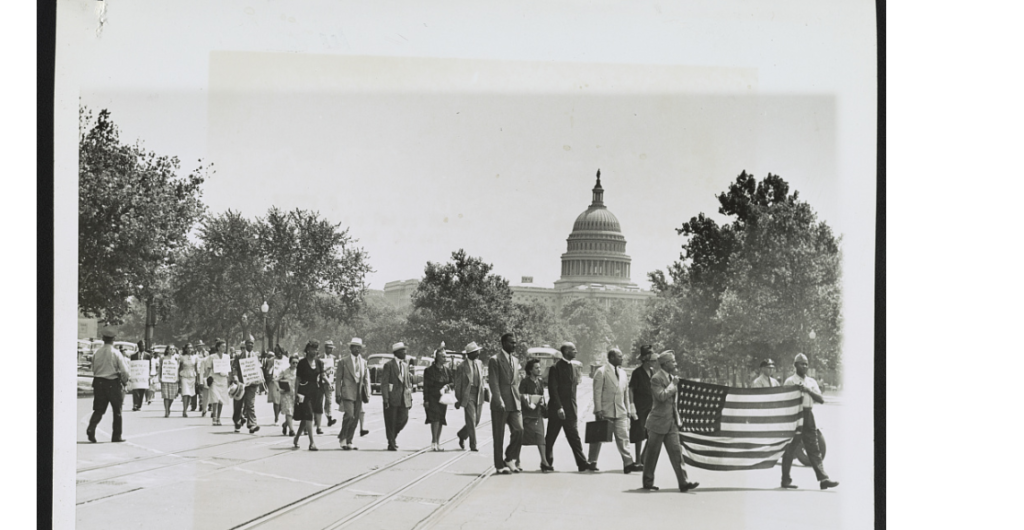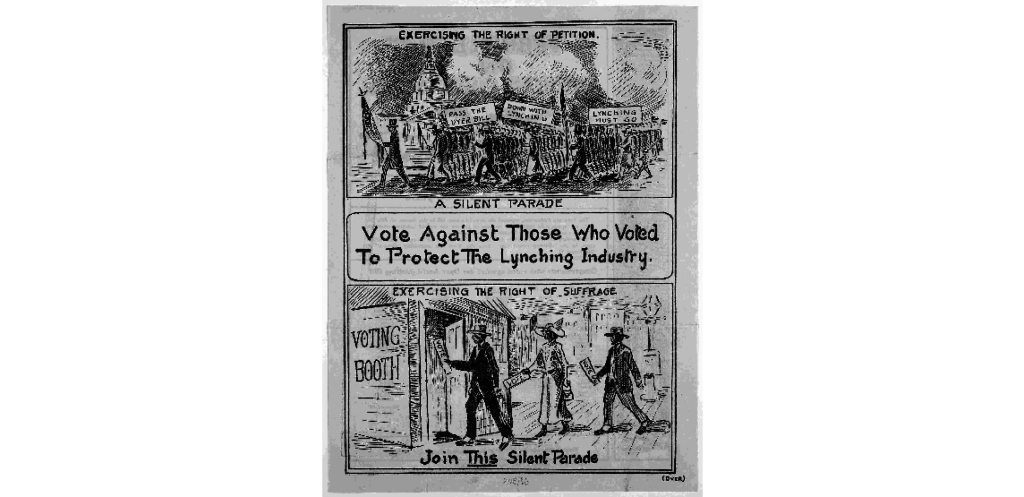To further explore this year’s Georgia History Festival theme, “The United States Constitution: Ensuring Liberty and Justice for All,” and in recognition of Black History Month, February’s #MarkerMondays discuss amendments and laws within the context of the struggle for human and civil rights in Georgia.

This week’s #MarkerMonday discusses the Moore’s Ford Lynching, for which the Georgia Historical Society, in partnership with the Moore’s Ford Memorial Committee, erected an historical marker in 1999. This event is considered the last mass lynching in America, and the GHS historical marker is widely accepted as the first historical marker recognizing a lynching in Georgia, and possibly in the United States.
On July 25, 1946, an unmasked white mob murdered four African-American sharecroppers--George Dorsey and his wife Mae Murray Dorsey and Roger Malcom and his wife Dorothy Dorsey Malcom--near the Moore’s Ford Bridge outside of Monroe, Georgia. Two weeks earlier, Walton County sheriff deputies had arrested Roger Malcom for stabbing his white landlord, during an argument. On the day of the attack, Mrs. Malcom and the Dorseys had accompanied Loy Harrison to Monroe, where Harrison posted Malcom’s bail bond in exchange for work on his farm. On the ride home, Harrison took an indirect route back to his farm and encountered the lynch mob by the Moore’s Ford Bridge.

Group of African-Americans, marching near the Capitol building in Washington, D.C., to protest the lynching of four African-Americans in Georgia, 1946.
Photo courtesy of the Library of Congress
After stopping the car, the mob pulled George Dorsey and Roger Malcom from the vehicle before binding their hands and dragging them to the roadside. After one of the victim’s wives recognized and called out the name of an assailant, the lynch mob grabbed the women as well. The mob brutalized the couples before repeatedly shooting them. Dorothy Malcom was reportedly 7 months pregnant.
Although President Truman ordered the Federal Bureau of Investigation to assist in investigating the lynching, and though over 100 people testified about the lynching in front of a grand jury in Athens, witnesses did not confirm the individuals involved in the lynch mob and no charges were filed. The case remains unsolved. However, on February 11, 2019, the U.S. Federal Court of Appeals upheld a lower court’s ruling to release sealed grand jury testimony from the trial for study, calling the Moore’s Ford Lynching an “event of exceptional historical significance.”

"A terrible blot on American civilization"
Photo courtesy of the Library of Congress
https://www.loc.gov/resource/rbpe.20803600/?sp=2
In the first half of the twentieth century, almost 200 anti-lynching bills were introduced in Congress, but none passed. In 2018, the Senate passed the Justice for Victims of Lynching Act of 2018 and the bill is awaiting approval from the House of Representatives.
Explore the links below to learn more about Moore’s Ford and lynching.
The Last Lynching: How a Gruesome Mass Murder Rocked a Small Georgia Town / Anthony S. Pitch
New Georgia Encyclopedia “Lynching”
Murder in Black and White: Moore’s Ford Lynching
The Washington Post “Appeals court orders grand jury testimony unsealed in the 1946 case of the ‘Last Mass Lynching in America”
U.S. House of Representatives “Anti-Lynching Legislation Renewed”
Congress.gov “S.3178 - Justice for Victims of Lynching Act of 2018”
Mary Turner and the Lynching Rampage of 1918
GHS houses several books and collections related to Moore’s Ford and lynching.
Georgia in black and white: explorations in the race relations of a southern state, 1865-1950 / edited by John C. Inscoe.
The NAACP crusade against lynching, 1909-1950 / Robert L. Zangrando.
Lynching in the New South : Georgia and Virginia, 1880-1930 / W. Fitzhugh Brundage.
Samuel Barnard Adams papers, 1871-1923.
The Race Question scrapbook, circa 1880-1900.
The Georgia Historical Quarterly published articles related to Moore’s Ford and lynching which can be accessed on JSTOR. If your library does not have access to JSTOR, you can go to www.jstor.org and create a free MyJSTOR Account.
"This Man Felker is a Man of Pretty Good Standing": A Reconstruction Klansman in Walton County
"Killing Them by the Wholesale": A Lynching Rampage in South Georgia
